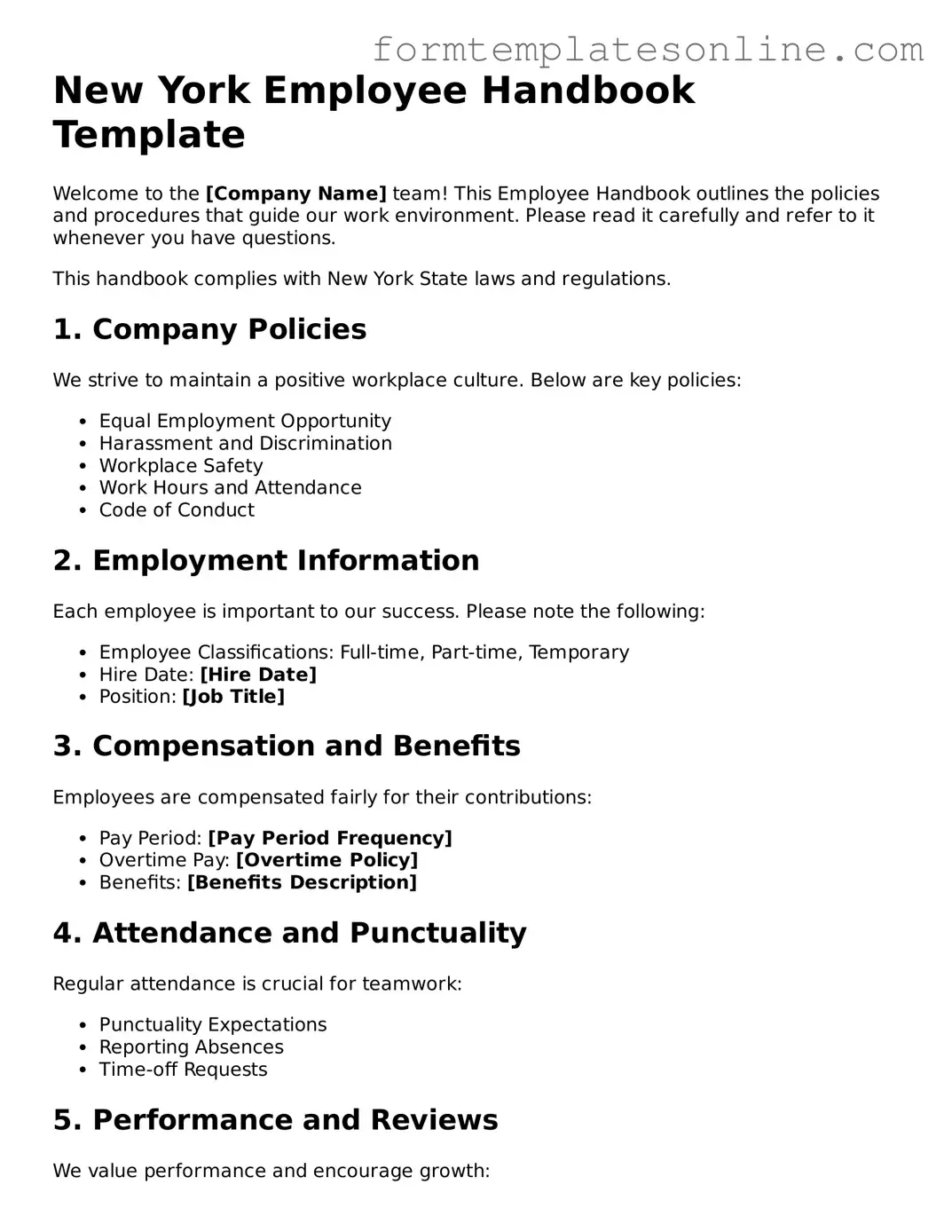What is the New York Employee Handbook form?
The New York Employee Handbook form is a document designed to outline the policies, procedures, and expectations of an employer towards their employees. It serves as a guide for employees, helping them understand their rights and responsibilities within the workplace. This handbook is essential for promoting a positive work environment and ensuring compliance with state and federal laws.
Why is an Employee Handbook important?
An Employee Handbook is crucial for several reasons. It provides clear guidelines on workplace policies, including attendance, dress code, and harassment prevention. By having a handbook, employers can protect themselves from potential legal disputes by demonstrating that they have communicated their policies effectively. For employees, it offers clarity on what is expected of them and what they can expect from their employer.
What should be included in the New York Employee Handbook?
A comprehensive Employee Handbook should include sections on company policies, employee rights, workplace conduct, benefits, and procedures for reporting issues. Additionally, it may cover topics such as equal employment opportunity, anti-discrimination policies, leave policies, and safety procedures. Each section should be written clearly and concisely to ensure that all employees can easily understand the information.
How often should the Employee Handbook be updated?
It is advisable to review and update the Employee Handbook at least once a year or whenever there are significant changes in laws or company policies. Regular updates ensure that the handbook remains relevant and compliant with current regulations. Employers should also communicate any changes to employees promptly to keep everyone informed.
Do employees need to sign the Employee Handbook?
While it is not legally required for employees to sign the Employee Handbook, having them acknowledge receipt of it can be beneficial. A signature indicates that the employee has received, read, and understood the handbook. This acknowledgment can serve as a reference point in case of disputes regarding policy violations.
Can an Employee Handbook be used in legal disputes?
Yes, an Employee Handbook can be used in legal disputes. If a conflict arises between an employee and employer, the handbook can serve as a key reference for the policies in place at the time of the incident. It can help clarify the expectations and responsibilities of both parties, which may influence the outcome of the dispute.
Is it necessary to have a lawyer review the Employee Handbook?
While it is not mandatory, having a lawyer review the Employee Handbook is highly recommended. Legal professionals can ensure that the handbook complies with all applicable laws and regulations. They can also help identify any potential legal pitfalls that could arise from unclear or outdated policies.
Where can I find a template for the New York Employee Handbook?
Many resources are available online for templates of Employee Handbooks specific to New York. Websites that focus on human resources or legal services often provide customizable templates. However, it is important to tailor any template to fit the specific needs of your organization and to ensure compliance with local laws.
